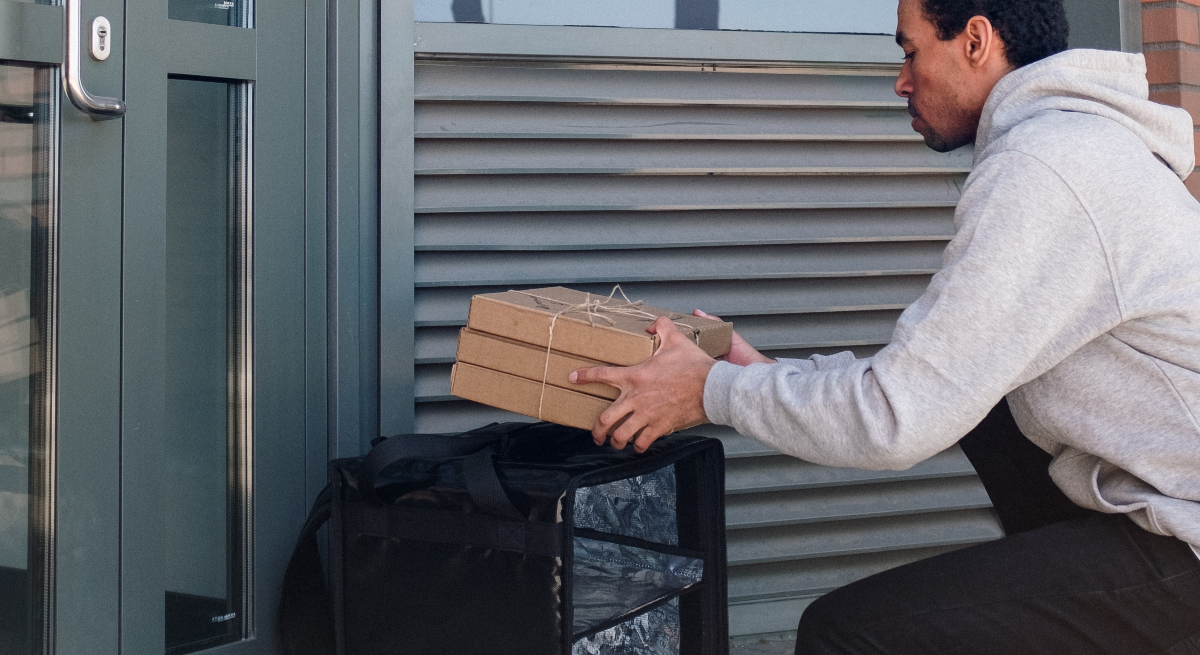Account for ‘The Invisible Guest’ Phenomenon
4 Min Read By Kurt Pahlitzsch
Smart Ways to Integrate the Delivery App Experience into Your Food Service Model
When a food historian someday drafts a history of how the restaurant industry survived the pandemic, food delivery apps will arise as one of the heroes of that story. After all, delivery apps and take-away service were the true lifelines of lockdown. They accounted for more than 80 percent of all restaurant transactions during those days.
Now that lockdowns are over, dining rooms are reopened, and the most onerous COVID restrictions have been lifted, some are surprised that food delivery apps remain so popular. But why not? Consumers discovered the ease and convenience of ordering through these apps – and many have now welcomed that convenience into their busy lifestyles and will often use a delivery service as one of their mealtime options.
This is good news for restaurant and franchise owners who can now enjoy another revenue stream for their businesses. Apps like DoorDash and Uber Eats can introduce a lot of new people to your restaurant and increase the patronage of pre-existing customers. It’s an apparent win-win for all parties.
Until reality sinks in.
For many restaurant owners, it’s been challenging to adapt their businesses to delivery service providers now that their dining rooms are open and tables are full again. For them, delivery drivers represent having to do more work, for less profit, and at great risk to the customer experience as the restaurant loses all control of the transaction once the meal leaves their location.
In a nutshell, delivery volume truly changes how a team needs to manage a restaurant.
So, with that in mind, here are a few field notes I’ve compiled after watching our franchise restaurants adapt to new world of Delivery Service Providers. See if any of these tips can help you capitalize on using delivery apps – without jeopardizing your crucial in-house business.
Get to Know Your 'The Invisible Guest'
I’ve started calling our delivery service orders “The Invisible Guest”. In the dining room, guests might think you’re going through a quiet period or wonder why their order is taking longer than usual, not knowing that, in the kitchen, the staff is working to fulfill an “unseen” volume of delivery orders that just came in via a food service app like GrubHub.
In today’s virtual world, unexpected orders come in through an app, not your door transom, which can make forecasting sales very challenging. The Invisible Guest affects staffing, food ordering, inventory, and food prep for the day. If you aren’t organized, your operations can be quickly overrun. It’s why a number of restaurants will actually throttle – or cap – the number of orders they’ll take every 30 minutes.
To me, that’s a stop gap measure. If you throttle your orders, you’re effectively leaving money on the table. Take it as a sign you need to better manage your new Invisible Guest volume.
It’s important to monitor and account for your “Invisible Guest” traffic so you can get a better handle on resource allocation. Start keeping notes so you get a feel for your new, unseen customers.
Start Seeing Delivery Drivers as Your Customers (Because They Are!)
I’ve seen drivers treated like second-class citizens at several food outlets. Mom and pop owners may not like someone coming in, cutting in line, and demanding their order just so they can be on their way. Unfortunately, that’s no way to win over the drivers who are bringing in revenue, and it’s not great optics for your dine-in guests to witness either.
That’s why it’s important to stay focused on both the guest experience as well as the delivery driver experience. Doing so has enabled my locations to become the restaurant of choice for these drivers – because we treat them like guests. Remember, drivers are your guests – they choose to take orders that originate from your location. Without them, you won’t get many orders.
Technology is your best friend when it comes to accommodating your delivery service drivers. There are plenty of options out there, but try to integrate a middle-ware computer system so orders can be tracked across all systems. Consider adding geo-fencing and location services, and use tools that make the tracking and handling of payments more seamless. Sure, it’s an investment. But there will be a decent ROI if you set up an efficient system for handling your third-party delivery drivers.
Once you start treating drivers as valued parts of the business, you’ll find ways to more seamlessly integrate their presence at your restaurant into your operating procedures. That will make for smoother transactions for all of you. Stop looking at drivers as a necessary evil – and start finding ways to embrace them like you would any paying customer.
Explore Emerging Automation Options Designed to Enhance Delivery Services
Recently, one of our restaurants served as a pilot site for a new “smart box” system designed especially for delivery service providers. Set up by a separate side entrance, it allows drivers to enter the restaurant discreetly and, instead of waiting for counter or kitchen personnel to handle their order, they simply walk over to a lock-box that already contains their freshly made order. They’ve been alerted by the app when their order is waiting for them and are given a four-digit code to open their specific “food locker”.
It’s an amazing system that has allowed us to make the delivery service experience faster, more contactless, and efficient for our kitchens, our staff, and the app drivers.
Delivery apps are here to stay. For your restaurant business to successfully integrate them into your operations, you’ll need to explore what options are available to you and your particular situation (and budget) to make it all a positive part of your overall service offering. It can be done. It sometimes just takes viewing the situation in a new and imaginative way.


